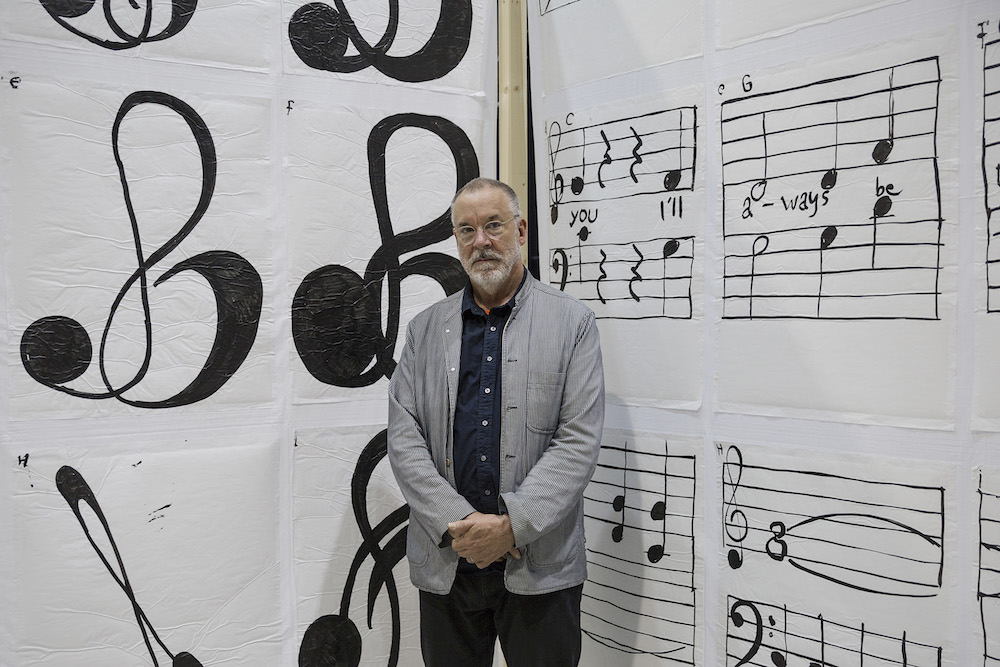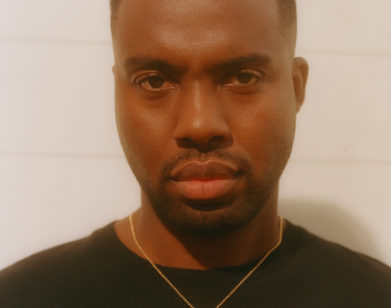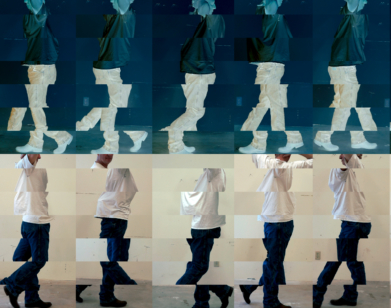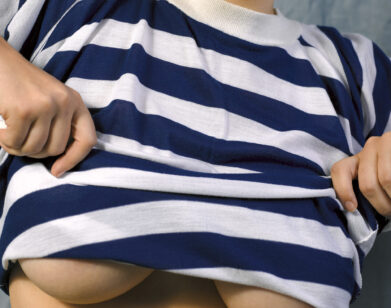Virtual reality and hypnosis are Matt Mullican’s choice art tools
Matt Mullican is in awe of a drone gliding over his new exhibition in Milan.
It’s three days before the 66-year-old American artist opens his largest retrospective to date. Taking place at the Pirelli HangarBicocca Museum, the exhibition, titled “The Feeling of Things,” includes 6,000 works installed within interior architecture designed by Mullican. As the drone buzzes overhead, he follows it with the wonder of a child and the pride of a parent.
“God, this is amazing,” Mullican says under his breath. It’s as if he’s finally grasped the show’s monumentality. Gathered in the exhibition are meticulously organized pieces from the 1970s to the present, arranged in a sort of labyrinth: paintings, films, flags, sculptures, drawings, neons, stained glass, photography, light boxes, and rubbings that examine subjective perception, non-verbal language, and the objective universe.
Mullican’s oeuvre gives abstract yet illuminating answers to fundamental questions about human existence and thought, explained using a word he recites with emphasis, “feeling.” “The question is often whether we think in words or in pictures, but I believe it’s neither,” Mullican says, while walking slowly through the exhibition. “I believe thought is much more emotional and contextual, like music playing, like the feeling when a mathematician solves a problem.”
Mullican’s understanding of the mind partially comes from self-examination, specifically by being hypnotized in front of live audiences. He started doing these performances in New York City during the ‘70s, where he enters a “trance state” and exhibits the extreme, subconscious behaviors of his alter ego, That Person, who Mullican says is “ageless and genderless.” Mullican physically appears as That Person in the exhibition’s documentary films and photographs. Drawings done by Mullican, while he is hypnotized (as That Person), are also on display.
“Before each performance, I always say that it could be my last,” says Mullican, who requires weeks or months to recover. “It gets worse as I get older, because it’s very intimate, and I’m more vulnerable. People are more embarrassed for me.”
Some critics reduce Mullican’s hypnosis, and overall explorations of subjectivity, to an individualistic study of Mullican himself. He was once called a fascist, both for his performances and for depicting made-up symbols on signs and flags. He’s been labeled sacrilegious for interpreting the universe through cosmologies. Unlike some of his classmates from CalArts in the ‘60s, where he was a student of John Baldessari, or his peers from the Pictures Generation in the ‘70s, or even his artist parents, Mullican has fielded a surprising amount of controversy.
A Mullican survey like “The Feeling of Things” clarifies certain misunderstandings. When audiences shy away from his art, perhaps it’s due to his uninhibited, potent representations of shame and loneliness. Mullican’s The Meaning of Things (Who Feels the Most Pain?)—pages of Google-sourced, banal, violent, and pornographic images—is a recent example of work that juxtaposes bizarre, paradoxical human behaviors. It’s off-putting, to say the least, seeing dozens of these images serialized on towering poster boards at the exhibition.
When asked if he thinks his approach is problematic, Mullican responds: “I believe it’s because of what I represent in my work. People may not write this about me, but I represent God in my work. I represent heaven in my work. I represent death in my work. I represent the world in my work. I represent the soul, whatever it is, in my work. It’s troubling, tough stuff that is very complicated, of course, and sometimes hard to look at.”
Mullican’s early work was also ahead of its time. His cosmology symbols preceded emojis. His interfaces organized data before tidy iPhone screens. His intense, inward gaze existed before normalized narcissism on social media. He first employed virtual reality in the ‘90s to depict an unknown city, using a supercomputer, at the Museum of Modern Art.
“I always wanted to enter the picture and say that the pictured reality is a reality,” Mullican explains. “I grew up with cartoons and television. I wanted to prove that stick figures live lives. Though it wasn’t initially about the term, virtual reality, that’s exactly what we did at MoMA. When you’re viewing a work like that, you’re really in a trance state! You’re in your head. You might as well have taken a pill or been hypnotized.”
Back at the museum, Mullican asks the drone operators to do repetitive zooming patterns—a reference to an early description of how virtual reality would work by Jaron Lanier, the founder of VR. “I want the drone to get in front of one of the paintings here up high—a picture, a place,” says Mullican, pointing to the 70 floor-to-ceiling paintings and rubbings in the immersive “Cubo” room of the exhibition. “Then, it would pull out, go around, get up close to another picture, and then do it over and over again.”
Mullican is mesmerized by the drone again, not in a trance state, per se, but in a moment of gratitude. “Look at that drawing! Look at what this drawing is doing!” he exclaims. “This is outrageous what we’ve done here. This is an outrageous thing! I’ve never felt this way about an exhibition, but I just feel that something great will come from this.”
MATT MULLICAN’S “THE FEELING OF THINGS” IS ON VIEW PIRELLI HANGARBICOCCA IN MILAN FROM APRIL 12 TO SEPTEMBER 16, 2018.







